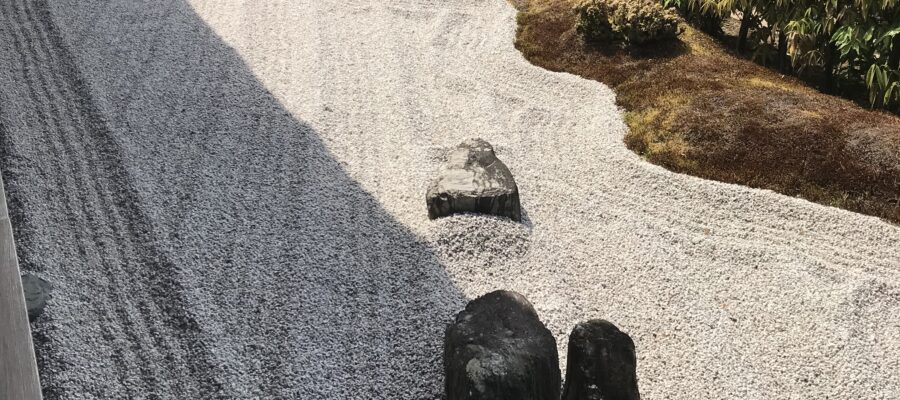茶室の飛石いろいろ
方丈を回っていくと、いくつかの茶室のそばを通っていきます。中には入っていないので、内部の様子までは分かりませんが、茶室まえの飛石を見るだけでも、楽しくなるように工夫されています。ああでもない、こうでもないと考えながら、敷石のデザインを考えたのだろうなと思います。
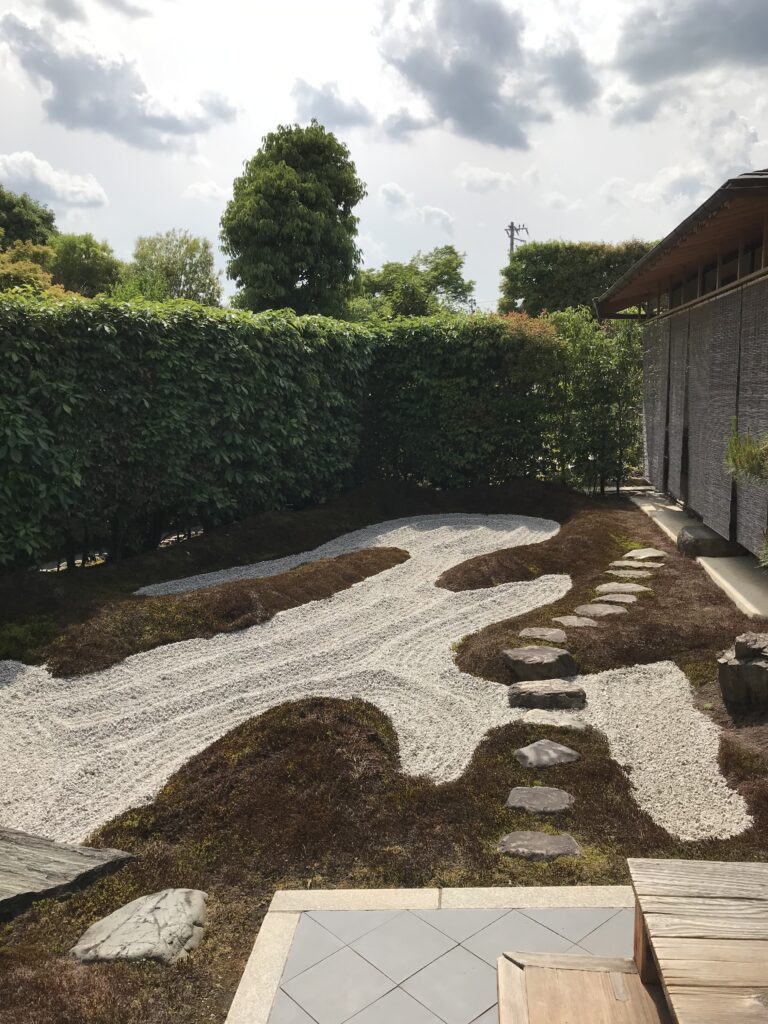
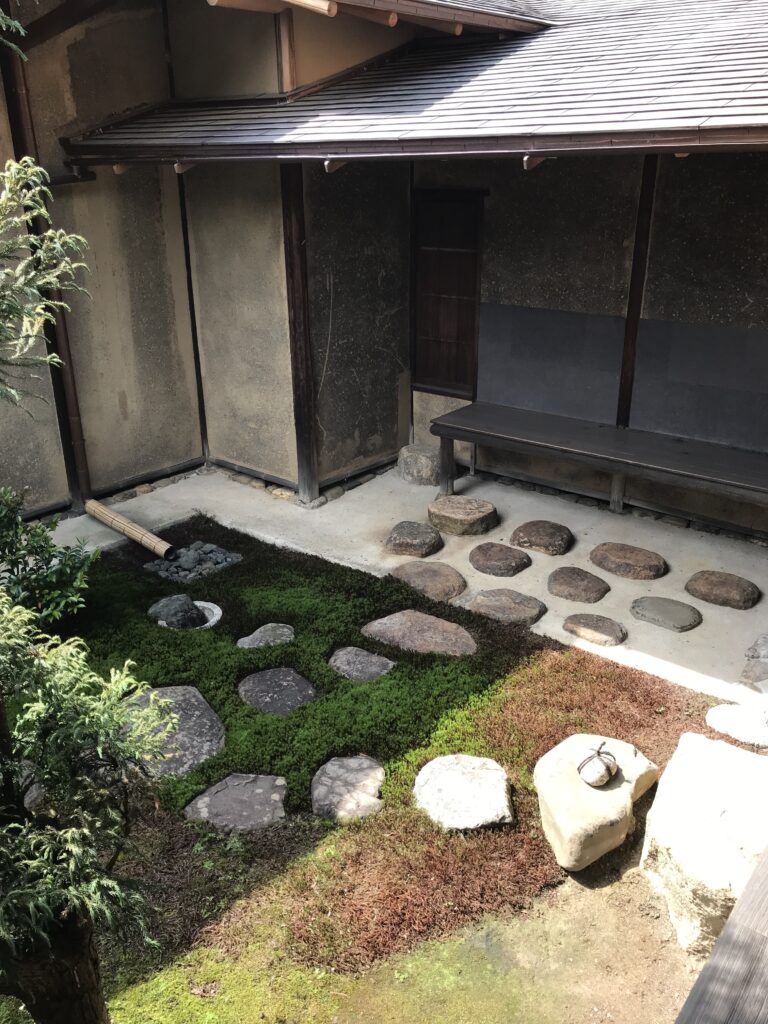
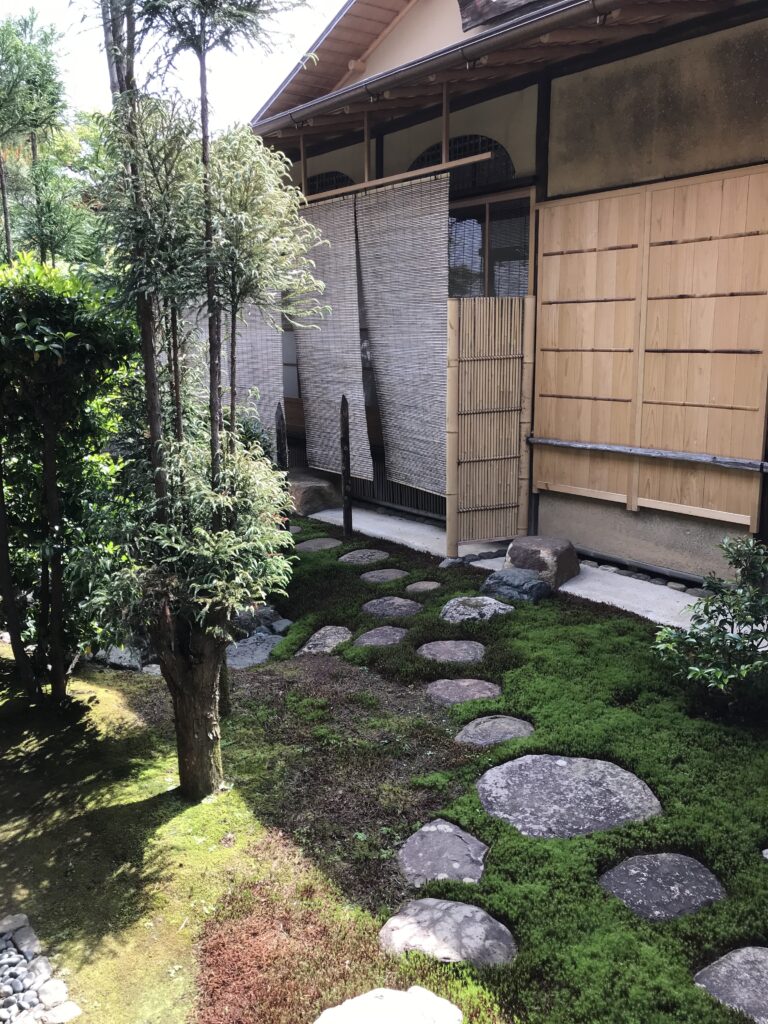
キリシタン大名への庭
飛石のデザインを楽しんだ後、方丈の裏の庭を案内していただきました。名前は閑眠庭。禅語の“閑眠高臥して青山に対す”から銘じられたそうです。こちらも重森三玲さんの作庭です。この瑞峯院は、室町時代の九州豊前豊後のキリシタン大名、大友宗麟が創建された寺です。
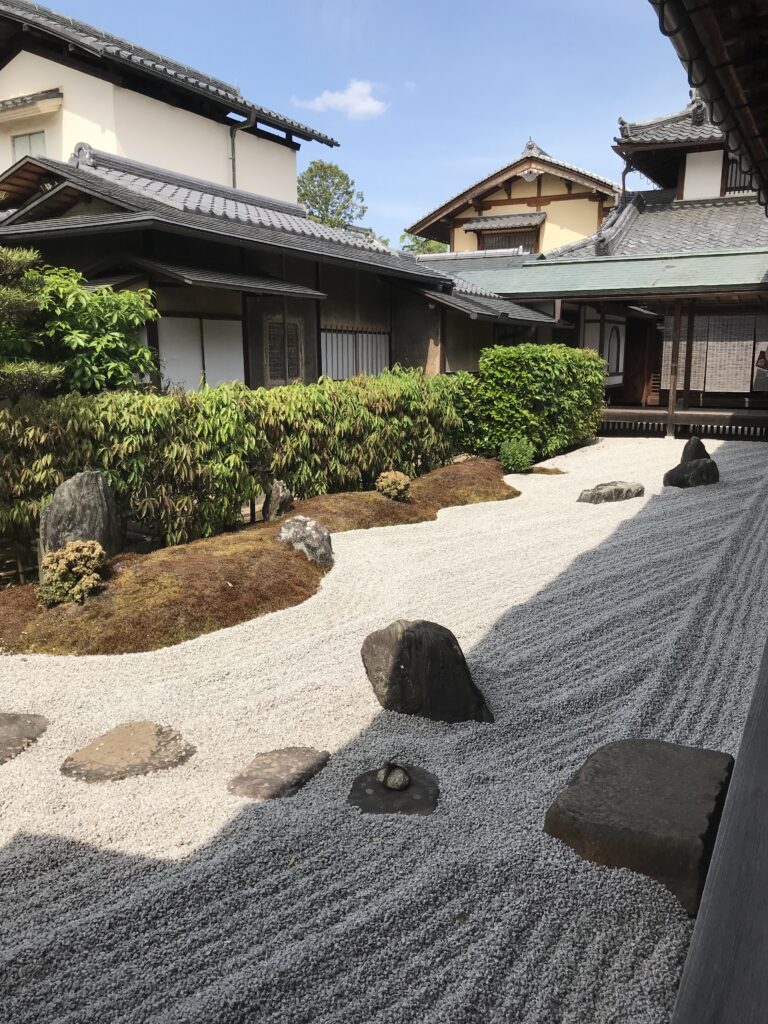
石組みのイメージは何か?
そのため、この庭には、あるデザインが隠されています。私もこの写真を使って、高校生や留学生への講義の際に、何をイメージできるか、よく聞きます。その前に、鶴や亀、牛などを表した石組を見せておいて、さて、これは何でしょうかと質問します。
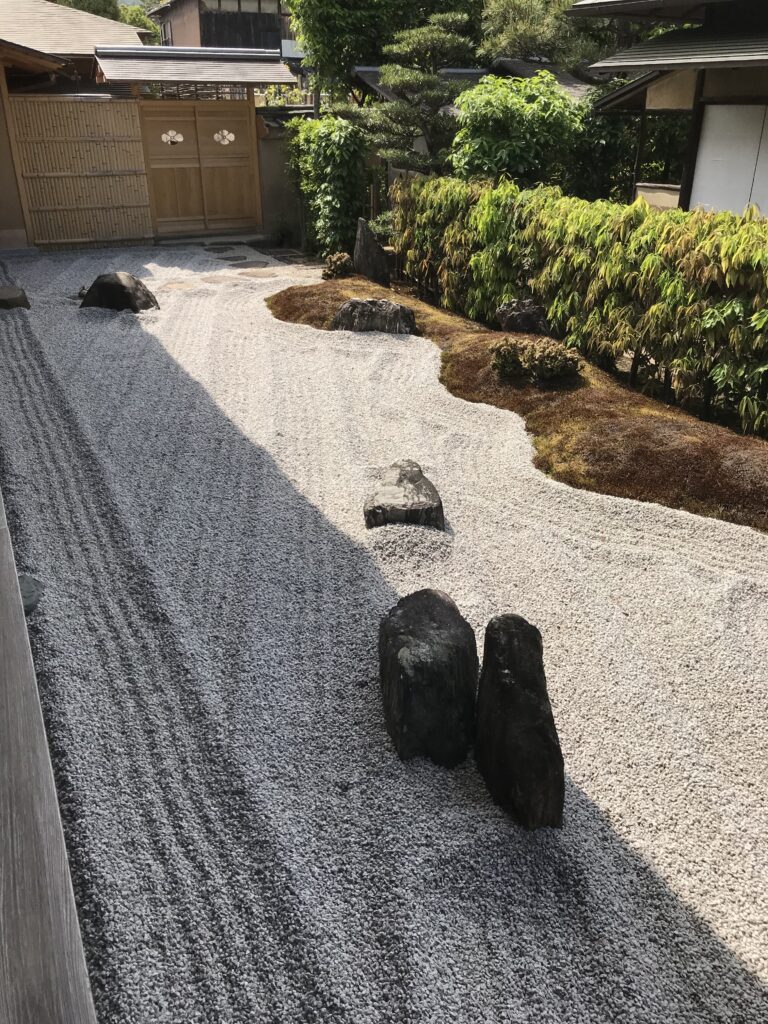
なかなか、正解は出てこないのですが、七個の石組をみて、頭の中で、縦に四個、横に三個の石に、それぞれ直線を引いてみてください。はい、どうでしょうか?十字架が見えてきませんか。そう、ここはキリシタン大名であっため、大友宗麟に対するオマージュとなる庭なのです。
禅寺に十字架とは、これ如何に?いろいろな答えが出てくる問答になりそうですが、深くは考えず、目の前の庭を楽しんできました。瑞峯院を出る前にも、中庭に小さな坪庭がありました。空間を無駄にせず、かといって華美でない、素朴な庭に挨拶をして、お寺を出ました。(完)
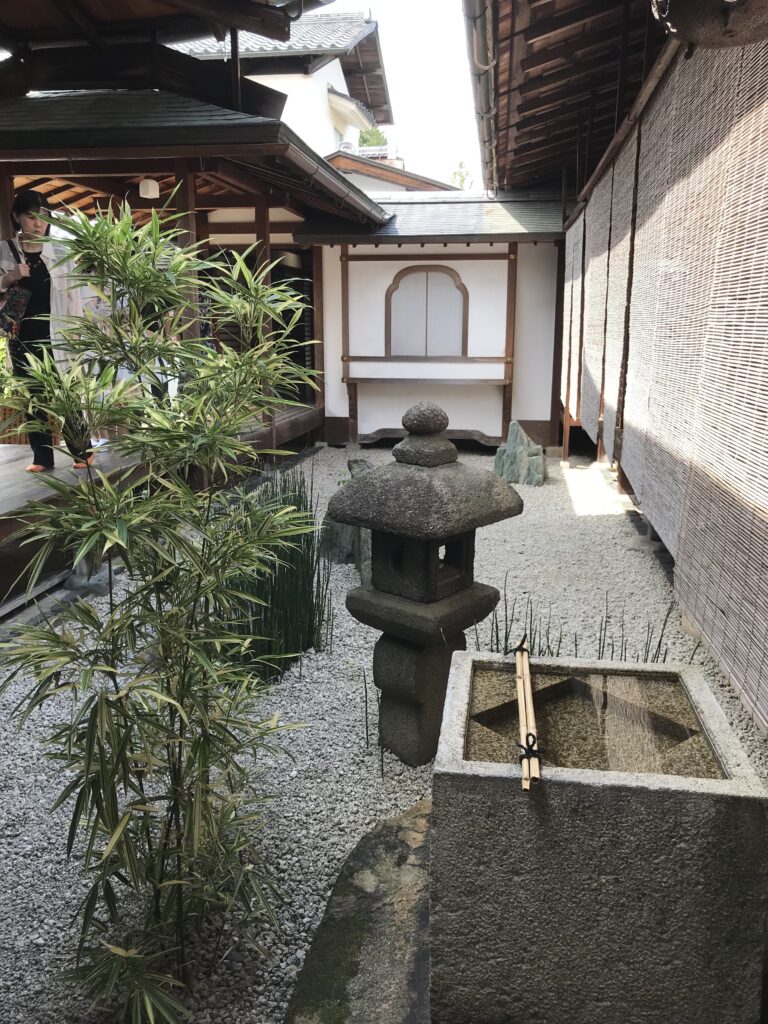
瑞峯院が紹介されている書籍
烏賀陽百合さんの「しかけに感動する『京都名庭園』」に瑞峯院が紹介されています。
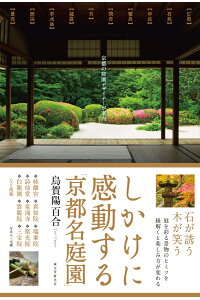
しかけに感動する「京都名庭園」 京都の庭園デザイナーが案内 [ 烏賀陽 百合 ]
価格:1,760円
(2021/5/2 18:44時点)
感想(1件)
Zuihouin Temple (2) Kanmin (Quiet) Garden
Various stepping stones of a tea house
As I walked around the Hojo, I passed by several tea houses. Since I didn’t go inside, I didn’t know what was going on inside, but just looking at the stepping stones in front of the tea houses was a fun experience. The design of the paving stones must have been thought out with a lot of thought.
The Garden of the Christian Lords
After enjoying the design of the stepping stones, I was guided to the garden behind the Hojo (main building). The name of the garden is “Kanmin (Quiet) Garden. It was named after the Zen expression “to face the blue sky in quiet sleep”. This garden was also created by Mirei Shigemori. This temple was founded by Otomo Sorin, a Christian feudal lord from Buzen Bungo in Kyushu during the Muromachi period.
What is the image of masonry?
Therefore, there is a certain design hidden in this garden. I often use this picture to give lectures to high school students and international students, asking them what they can imagine. Before that, I show them the masonry representing cranes, turtles, cows, and so on, and then ask them what these are.
It’s hard to come up with the right answer, but look at the set of seven stones and draw a straight line in your mind to each of the four stones vertically and the three stones horizontally. Yes, what do you think? Can’t you see a cross? Yes, this is a garden that pays homage to Otomo Sorin, a Christian feudal lord.
What is a cross in a Zen temple? This is a question that could be answered in many ways, but I didn’t think about it too much and just enjoyed the garden in front of me. Even before leaving Zuihouin Temple, there was a small tsuboniwa garden in the courtyard. I left the temple after saying hello to the simple garden, which was not a waste of space and was not too flowery. (End)
Temple Zuihouin (2) Jardin Kanmin (calme)
Diverses marches d’une maison de thé
En me promenant dans le Hojo, je suis passée devant plusieurs maisons de thé. Comme je ne suis pas entrée, je ne savais pas ce qui se passait à l’intérieur, mais le simple fait de regarder les pavés devant les maisons de thé était une expérience amusante. Le design des pavés doit avoir été pensé avec beaucoup de réflexion.
Le jardin des seigneurs chrétiens
Après avoir apprécié la conception des tremplins, on m’a guidée vers le jardin situé derrière le Hojo (bâtiment principal). Le nom du jardin est “Kanmin (calme) Garden”. Il a été nommé d’après l’expression zen “faire face au ciel bleu dans un sommeil tranquille”. Ce jardin a également été créé par Mirei Shigemori. Ce temple a été fondé par Otomo Sorin, un seigneur féodal chrétien de Buzen Bungo à Kyushu pendant la période Muromachi.
Quelle est l’image de la maçonnerie ?
Par conséquent, un certain design se cache dans ce jardin. J’utilise souvent cette image pour donner des conférences aux lycéens et aux étudiants internationaux, en leur demandant ce qu’ils peuvent imaginer. Avant cela, je leur montre la maçonnerie représentant des grues, des tortues, des vaches, etc. et je leur demande ensuite ce que cela représente.
Il est difficile de trouver la bonne réponse, mais regardez l’ensemble des sept pierres et tracez dans votre esprit une ligne droite vers chacune des quatre pierres verticalement et des trois pierres horizontalement. Oui, qu’en penses-tu ? Tu ne vois pas une croix ? Oui, c’est un jardin qui rend hommage à Otomo Sorin, un seigneur féodal chrétien.
Qu’est-ce qu’une croix dans un temple zen ? C’est une question à laquelle on pourrait répondre de bien des façons, mais je n’y ai pas trop pensé et j’ai simplement profité du jardin devant moi. Avant même de quitter le temple Zuihouin, il y avait un petit jardin tsuboniwa dans la cour. J’ai quitté le temple après avoir dit bonjour à ce jardin simple, qui ne gaspillait pas d’espace et n’était pas trop fleuri. (Fin)
